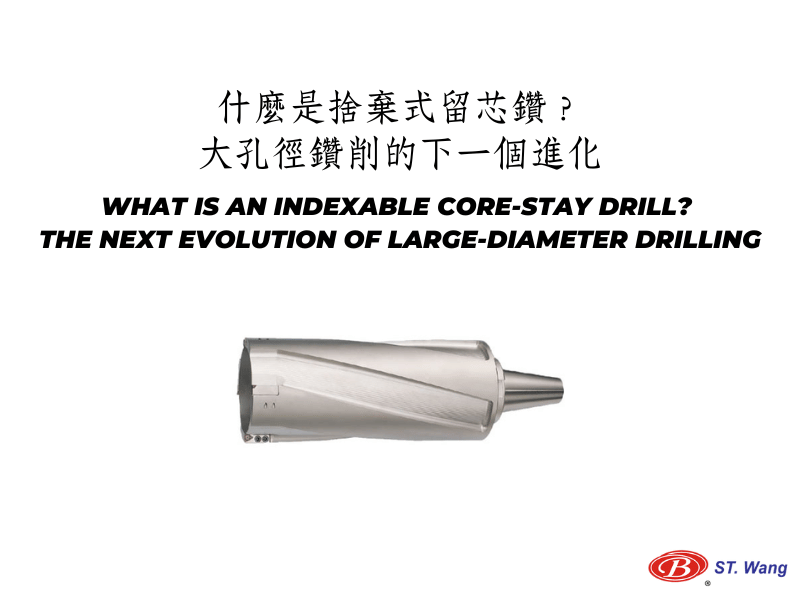Machining has always been about precision, speed and dependability, but in the extremely competitive manufacturing environment it’s all about efficiency. The tools you employ directly impact your bottom line whether you’re making aerospace components, automotive parts as well as high-tech electronic products. High-speed drill, tungsten carbide based end mills, and threading insert are making a serious difference.
They aren’t just upgrades to older software. They are a better way to minimize the amount of downtime, cutting costs overall as well as delivering higher quality results with less effort. Let’s take a closer examine how each is helping manufacturers drill deeper to cut faster, cut better, and complete faster.

Image credit: stwang-tw.com
Indexable Drills: More Holes, Less Hassle
Drilling holes of a large size used to be expensive and laborious. Drills that were solid wore out fast needing sharpening, and often caused delays in production lines. This is the reason why machines are being replaced by indexable drills. Instead of replacing the entire tool once it becomes dull, you just change the cutting inserts and get back to work in just a few minutes.
Indexable drills are well-known for their effectiveness. They’re engineered for long runs, heavy-duty performance as well as easy maintenance. You can cut down on the amount of waste you produce, keep your tool inventory at a minimum, and prolong the life of your equipment by using replaceable inserts. SHANG TZANG WANG ENTERPRISE CO., LTD, offers modern core-stay drills for disposal that provide consistent performance in large-diameter applications. This upgrade will reduce the time to repair for shops that do repetitive hole machining.
High Speed Drills are Designed to Modern Demands
In a production environment where time is the most valuable commodity High-speed drills are designed to move fast but without sacrificing accuracy. They’re able to work with tough materials and fast cycles. They’re employed in everything from medical precision components to high-volume automobile parts.
Modern high-speed drilling tools have improved flute designs as well as cutting edge coatings which help reduce friction and ward off the buildup of heat. They also extend the life of the tool. This means fewer breakages more tool maintenance, and more tools out the door. Moving to a high-speed drilling is a fantastic option for any machine shop owner who is frustrated by an unfinished tool during the course of.
Tungsten Carbide End Mills: Reliable Performance Cut After Cut
When it comes to milling, tungsten carbide end mills are the workhorses of the shop floor. They are renowned for their resistance to heat and toughness. They are also able to mill through tough materials without losing edge sharpness. These tools are perfect for any task, from roughing large sections or finishing corners.
What what makes tungsten carbide endmills distinctive is their adaptability. They can be customized to fit a variety of applications from titanium to aluminum with different flute counts and helix angles. For machinists who need both accuracy and toughness, carbide-based end mills offer the perfect balance between aggressive material removal as well as clean surface finishes.
Threading Inserts: Tiny Tools, Big Impact
It could appear that making threads is an insignificant part of the entire process but in reality it’s important. A thread that’s not properly made can ruin any part that’s perfectly. This is why a top-quality threading insert matters. These small, replaceable tools are designed to cut internal or external threads with a high degree of accuracy and consistency.
Threading inserts, in contrast to conventional taps and dies that wear differently over time, offer consistent results. The tool can be adjusted to the next cutting spot when one edge has become dull. It’s not necessary to take it out or restart. It is quick, cost-effective, and easy to clean. Machinists not only love threading inserts due to their speed but also due to their dependability. A good insert will guarantee that your threads fit perfectly the first go. There’s no need for rework, or second passes.
The Bottom Line
In today’s machining, you cannot afford to waste time. The most efficient shops today are shifting towards more efficient and more adaptable machines. The cutting tools aren’t only more accurate, but they also streamline workflows and minimize changes, in addition to extending time-to-use of the equipment. What’s the end result? There is less time spent on troubleshooting, and more time focusing on delivering precision parts. In a market where more competitive margins and increased demand are commonplace, tools that can work more efficiently can give companies a competitive edge.





